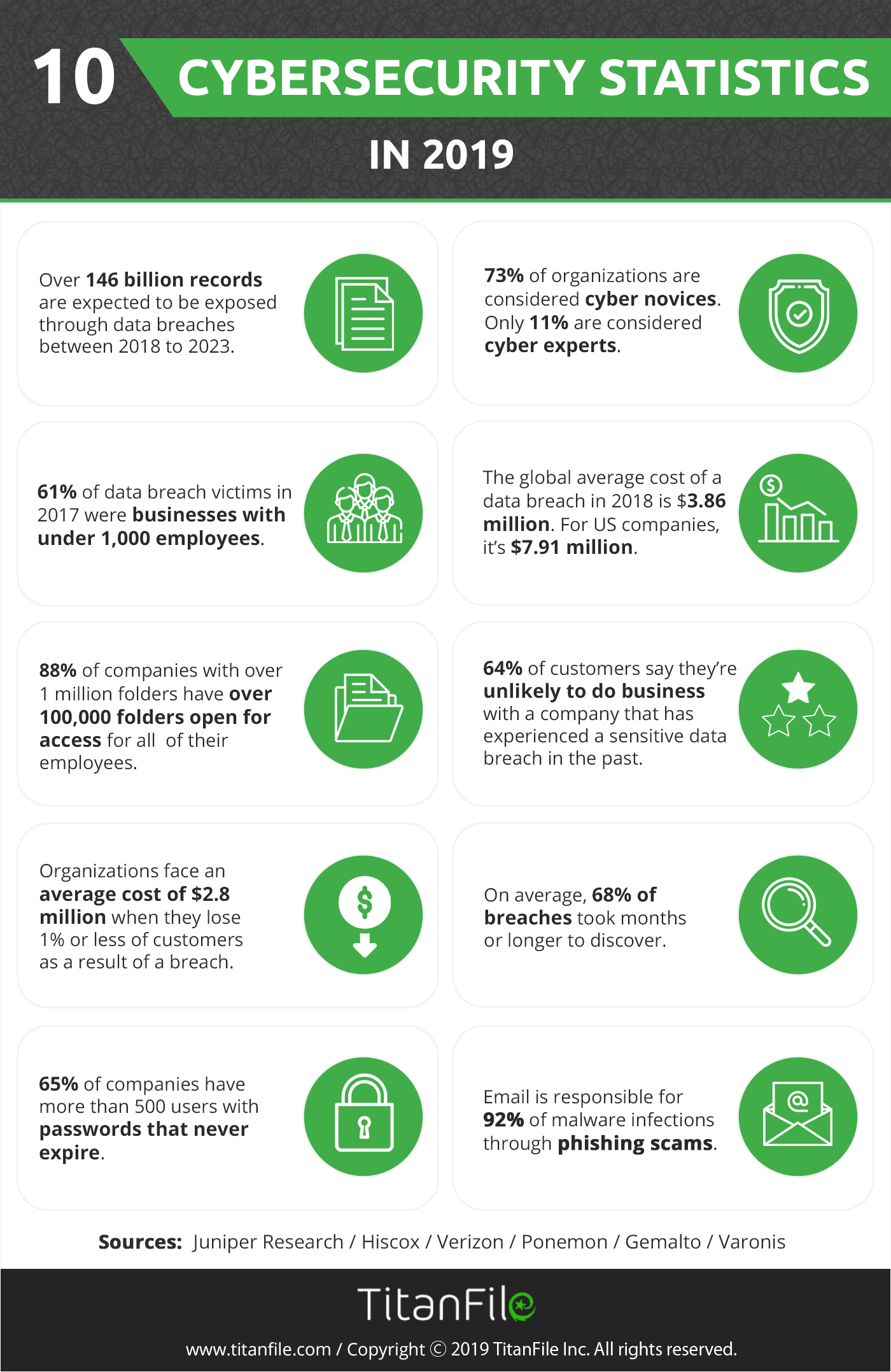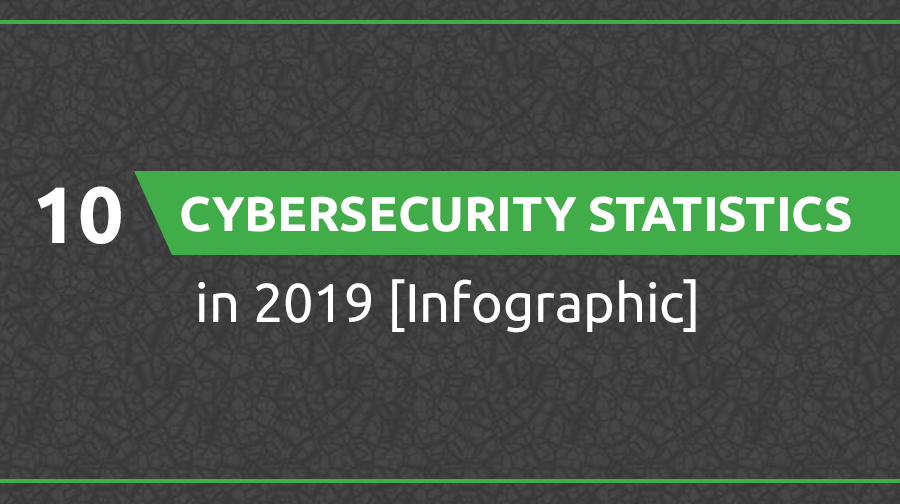Cybersecurity is easy to procrastinate when you don’t quite understand what’s happening around the world. Luckily for you, you’ve stumbled onto this page where we’ve curated 10 cybersecurity statistics to show you why cybersecurity is important.
If your company hasn’t experienced a data breach, that’s great news! But you shouldn’t celebrate just yet. If your cybersecurity is lacking, it’s only a matter of time before you fall victim to a breach because there are plenty of cyberattacks to go around. Just a simple Google search for “data breach” will prove this to you.
We’re hoping that these statistics motivate you to invest more time and resources into your cybersecurity.

10 Cybersecurity statistics in 2019:
1. The rate of data breaches is increasing
Over 146 billion records are expected to be exposed through data breaches between 2018 to 2023 based on a rate of increase of 22.5% per year. (Cybercrime and the Internet of Threats 2018 by Juniper Research)
This number will likely include your sensitive company or customer information.
2. Most companies are not “cyber-ready”
73% of organizations are considered cyber novices. Only 11% are considered cyber experts. (Cyber Readiness Report 2018 by Hiscox)
This statistic means that only 27% of organizations are ready to take on cyber threats. Would you say that your organization is one of them?
3. Cybercriminals do not discriminate
61% of data breach victims in 2017 were businesses with under 1,000 employees. (2017 Data Breach Investigation Report by Verizon)
Cybercriminals don’t just target large companies! If you’re a small or medium-sized business, you’re on their list too.
4. The costs of security breaches are rising
The global average cost of a data breach in 2018 is 3.86 million, which went up 6% from the previous year. For US companies, it’s $7.91 million. (Cost of a Data Breach Study in 2018 by Ponemon.)
What expenses does this cover? Legal costs, public relations costs, opportunity costs, and other breach relief and mitigation costs.
Related | Estimate the cost of a data breach for your business with IBM’s calculator.
5. Employees have access to a lot of information
88% of companies with over 1 million folders have more 100,000 folders open for access for all their employees. (2018 Global Data Risk Report by Varonis Data Lab)
This increases the risk of accidental leaks from employees or deliberate leaks from rogue ones!
6. People will avoid doing business with you
64% of customers say they’re unlikely to do business with a company that has experienced a sensitive data breach in the past. (Gemalto)
Honestly, you probably wouldn’t either.
7. Losing customers is expensive
Organizations face an average cost of $2.8 million when they lose 1% or less of customers as a result of a breach. For 4% or more, the average cost is $6 million. (Cost of a Data Breach Study in 2018 by Ponemon)
Clients feel more secure when they know they can rely on you to protect their sensitive information. If they can’t trust you with their information, they can’t trust you, period.
8. You could be experiencing a breach right now
On average, 68% of breaches took months or longer to discover. (2018 Data Breach Investigation Report by Verizon)
You could be experiencing a breach right now and you might not find out until months from now.
9. People have poor security habits
65% of companies have more than 500 users with passwords that never expire. (Global Data Risk Report by Varonis)
Can you guess how many of these users haven’t changed their passwords in years because they’re not prompted to?
10. Email is still the #1 cause of breaches
Email is responsible for 92% of malware infections through phishing scams. (Data Breach Investigations Report 2018 by Verizon)
Who uses email? Pretty much everyone.
So what do all these cybersecurity statistics mean?
You need to invest in cybersecurity and have a solid system in place.
Cyber attacks are only effective if your company is unprepared to defend against the threats. You should do everything you can to prevent a breach: hire a cybersecurity professional, stay alert, provide proper training to employees, implement the right cybersecurity tools. These 21+ cybersecurity tips may also help.
You also need a plan of action in case something slips through and you do experience a breach. Unless you’re completely offline, it’s impossible to be 100% secure from cyber attacks. By being prepared for the worst, you’ll be able to rebound faster and reduce costs.
Help spread security awareness by sharing these cybersecurity statistics below!
